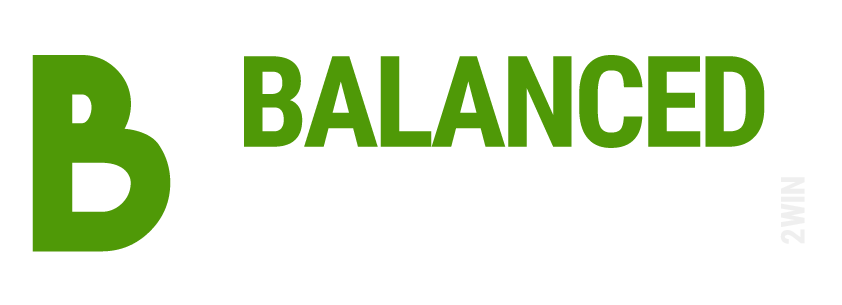
EFQM and Balanced Scorecard for improving organisational performance – Part 2 of 3
Internal Research
Internal research was conducted of both the Inland Revenue’s senior management and its quality community (EFQM co-ordinators). This was intended to inform any recommendations for the department arising from the research. Senior management views were commissioned of Idm ltd, an independent management consultancy. An e-mail questionnaire was issued to the quality community. The combined findings are summarized below.
Approach to quality improvement
The present use of EFQM is part of a range of quality tool use within the department including Chartermark, Investor in People and ISO. All the directors interviewed could point to a significant amount of quality improvement activity. Directors recognized that there was a need for more structure around the management of quality tools and techniques.
‘We have lots of activity to improve quality but no overall quality strategy, it’s useful but we don’t know where we are going with it’.
This view is echoed by the EFQM co-ordinators who responded to the questionnaire. 62.5% thought the department needed more clarity and purpose about using quality tools for best effect.
The need for a more structured approach to quality improvement appears to impact management commitment, with a number of Directors already indicating they were moving away from use of EFQM to other departmental approaches:
‘We have done EFQM in the past but not this year… we need a shift from continuous improvement to look at the big issues’.
Directors were also concerned about the amount of resources required for EFQM. The survey indicated high activity levels (and therefore potential high resource usage) across a range of self-assessment approaches.
Many Directors found EFQM bureaucratic and time consuming, and the language within the model a barrier. Different approaches have begun to be adopted (including re-writing the model) which may hinder internal benchmarking of best practice.
Alignment of business strategy and quality improvement activity
The process of EFQM assessments and plans for improvement runs parallel to the departmental strategic management process, and there is a need to improve the linkage. Directors at present tended to confuse the link between quality improvement frameworks and the strategic management within the department. The lack of linkage also tended to leave many directors with a number of improvement plans, and a greater need for prioritization of improvement activity.
Improving performance
Many Directors could point to improved communication and planning and greater staff involvement as a result of using EFQM. The model’s framework appears to help employees understand an organization and take a more holistic view of their individual contribution.
There is however, little evidence of tangible links between any business improvements and use of EFQM. In part this may be due to an increased focus on enabler activity and the need to develop measures for improvement activity.
Some areas of the department had recognized the relative strengths and weaknesses of EFQM. The model was being developed as assessment tool to support strategy development and deployment.
‘We thought that EFQM was the holy grail and would be the answer to all of our problems but we are now recognizing it is a good diagnostic tool not a strategy and business planning model’.
BSC development
The introduction of a BSC in the department was seen by many Directors to address the two major limitations of EFQM use: the lack of a strategic direction and the need to focus improvement activity.
Most Directors could see the benefits of introducing the BSC in terms of defining and articulating the departmental strategy and providing a springboard for organizational change. Its role in helping define the key organizational measures was also well understood.
Directors also recognized that the introduction of the BSC had to be treated as a change management initiative: the need for top management commitment, recognition of cultural issues and development of a learning approach were all highlighted. Embedding the BSC in the activities of the department was also seen to be critical.
The need to integrate the BSC with the use of EFQM was equally recognized, and some of the Directors had given consideration as to how this may be done. The comments reflect the view of the BSC as a strategic tool, which provides a context for excellence improvement activity within EFQM. There is also a general perception that the use of either model was not mutually exclusive, and there could be complementary use of both.
External Research Findings
Four comparator organizations were identified to research the practice of using EFQM and BSC. The research took the form of detailed interviews with key personnel within each organization, supported with documentary evidence of the practices and approaches identified.
The findings are presented under major themes. To protect confidentiality a number of comments and observations are unattributed. We are particularly grateful to Siemens Communications, Royal Sun Alliance, Northern Ireland Electricity and Swedish Customs for the access and time afforded.
Continued use of EFQM
All the organizations continue to use the present EFQM framework, even after introducing a BSC. They had also not sought to move to a more customized approach nor had they stopped using the model. This is partly explained by the fact that the majority of organizations had either won or were seeking to win national or European quality awards.
The improvement benefits of benchmarking from a generic framework were valued above any potential benefits of customization. Moreover, the arguments of the reduction of resource usage from customization tend to ignore other opportunity costs. RSA, Siemens and Yell used the full model, as its explicit nature helped avoid the potential consultancy costs needed in other quality approaches.
In introducing EFQM the organizations (except Swedish Customs) had used a ‘Trojan horse’ approach, in which EFQM is introduced firstly, to gain acceptance of the benefits of an operational excellence approach within the organization. It appears the explicit quality criteria and linkage within the model helps organizational understanding of excellence principles and practice. For example, Siemens spent the first year simply raising awareness of the EFQM approach to reinforce understanding throughout the organization, before introducing the full model.
To overcome the potential bureaucracy in model usage a number of the established EFQM user organizations use the model as a management tool. Here managers develop an understanding of the principles of EFQM and use it to effectively manage the business. It is not seen as a separate activity, and usage is not cascaded to lower levels of the organization.
The organizations also generally avoid using multiple self-assessments and instead adopt the award submission approach, as both a performance review and a presentation of a coherent view of the progress the whole organization is making in improving organizational excellence. The submission approach forms an essential part of the business planning cycle with clear links to the strategic objectives of the organization.
Achieving Results
The development of a BSC within each organization tends to support the view that use of EFQM can create a concentration on internal activity at the expense of the business results the organization is trying to achieve. For a number of the organizations the need for a BSC (to focus on performance results) was actually highlighted in their annual EFQM assessments.
The BSC can engender more ‘right to left’ thinking, focusing first on the strategic objectives of an organization rather than simply ‘ticking boxes’ in the EFQM model. For the comparator organizations it also serves as a more effective communication tool helping employees understand what the organization’s mission or values are, and what strategic objectives need to be achieved. EFQM was too complex and bureaucratic for this purpose.
BSC Development
The apparent simplicity of the BSC may contrast well with the initial complexity of the EFQM model but this simplicity is misleading. An effective BSC appears to take time and resource to develop, and a willingness to learn from implementation. All the organizations had developed initial versions of a BSC, which had been implemented quickly to learn from ‘real life’ experience.
This experience is critical to developing an effective BSC for the longer term, and it can take time. In the case of RSA, the BSC has been in operation 12 months and in Siemens over 3 years. The Siemens BSC (fig 6.1) is a sophisticated tool: it has identified causality and linkage, and an innovative approach in strategic theming to improve communication and employee understanding.
In developing a BSC the organizations found little in the literature of Kaplan and Norton to help (which may explain the high rate of failure identified in studies). Prior knowledge of the principles of causality and process management from EFQM may help organizations develop a more effective Scorecard. For example, understanding how people, partnerships and process management improve business performance may help develop an effective tool to better measure the impact. Siemens, Yell, and Phillips were all familiar with EFQM when developing the BSC and each has developed a sophisticated tool.
An exception to the principle is Swedish Customs who developed a BSC before adoption of the detailed EFQM model (yet interestingly were considering adopting EFQM to improve overall organizational performance). They have created a sophisticated five box BSC (Fig 6.2), which includes a ‘futures’ perspective (missing from all the others and an issue not addressed by Kaplan and Norton) and is underpinned by aggregation indices. Swedish Customs however, appear to address many of the issues of quality improvement and performance measurement without the need for models. There is a clear drive and support from the top to deliver for the future.
| PERSPECTIVE | FOCUS | CRITICAL SUCCESS FACTORS | INDICES |
| Society | Owner | Tax collection, Procedures cost, Protections, Prevention | Customs trade usefulness index Customs society index |
| External | Clients | Service, Democracy, Rule of Law | Clients index |
| Internal | Process | Efficiency, Productivity, Quality | Customs efficiency index |
| Possibility | Co-workers | Leadership, Well-being | Customs co-worker index |
Implementing a BSC
The organizations found the building of a BSC may test the organizational culture, particularly in terms of processes, accountability and top team behavior. The key BSC processes identified as core to delivery of value may not previously have been measured and may cut across organizational boundaries. This can challenge the present ‘balance’ or equilibrium within an organization – which can create the potential for breakthrough corporate success. Such challenges may be uncomfortable for many Boards however, who can seek comfort in traditional measures and behavior:
‘Initially the Board wanted to change the measures to ones they could achieve’
‘Its like U-boat strategy, the Board hunt in packs for the weakest member’
‘The Board did not want to take responsibility for measures they couldn’t wholly control’
(Names withheld for confidentiality)
Best practice in the comparator organizations was the establishment of a central team responsible for the whole strategic/performance/quality management process. Such a team helps develop a coherent approach to the use of related performance and quality tools; helps the Board understand the best use of such tools; provides analytical skills to support the Board in the evaluation of performance and communicates Board decisions to the rest of the organization.
Accountability
BSC measures, which address customer value issues, tend to cut across organizational boundaries and accountability for delivery is a major issue. This is particularly true for the public sector where delivery may depend on a complex interaction of relationships and processes not within the control of one person.
For the private sector accountability can give rise to similar issues particularly in companies responsible for the whole value chain. Here the solution to accountability was generally to make a single person accountable for a measure regardless of whether they had total control. For example, in Yell ltd. a key BSC measure (critical to bottom-line performance) was to reduce errors in advertisement placing. Accountability was given to the Operations Director despite the fact that 50% of defects were caused by Sales. The focus brought by an individual with sole accountability led to a reduction in the error rate from 0.5% to 0.09%.
Compensation was another tool for incentivizing the appropriate behavior and accountability. A number of the organizations had linked BSC measures to reward. A tension is that initial versions of the BSC may need further development and to incentivize early may reward the wrong behavior. Not to incentivize may however, fail to gain buy in. It would appear a question of timing, with at least 12 months allowed before linking measures and compensation.
Communication
A key factor in using a BSC is the effective communication of strategy. All the organizations used the BSC to communicate progress against strategic objectives and encourage ownership and objective setting at lower levels in the organization. In this the design is key: not only must it articulate the mission through linked strategic measures it must also be readily understandable by employees.
To help understanding Siemens had developed a strategically themed BSC to assist the process of telling the story of the key factors of success, thereby helping managers make coherent strategic choices.
Strategy development
All the organizations had found a need for additional approaches to developing effective business strategies. EFQM does not ‘do strategy’ but is more a framework for operational excellence. Siemens, and RSA (IT), specifically referred to the need for other tools to generate strategic choices.
‘Simply to follow the EFQM model will result in me-too strategies. You need first to develop a distinct strategy and then use the model to help you excel within it’ Ian Clarke (Siemens, Head of Business Improvement)
The BSC may focus more on results than EFQM, but it still leaves the issue of whether the articulated strategy is the right one. The debate about strategy and appropriate measures to support achievement can only be helpful for organizations making strategic choices, but it may still represent ‘as-is’ rather than ‘should-be’.
Swedish Customs had tried to systematically address this by developing a future perspective and a stakeholder element in their BSC. Environmental scanning was a key process and measure, as was the identification and focus on key stakeholders: anticipating the future was inherent in their BSC.
Problem resolution
Neither EFQM nor BSC helped the organizations resolve the problems identified in their use, particularly in the case of EFQM where many issues could be identified during the assessment process. The benefit of diagnosis is undermined by the lack of help in indicating the treatment required. To quote Ian Nield, CEO Midlands Excellence:
‘The model doesn’t tell you what to do’
This conflicts with the organizational learning and innovation inherent with the philosophy of EFQM. Although it may be argued that knowing the problems creates a potential for learning, it’s also difficult to learn if one does not know what to do. Equally, as Siemens found even agreeing what the problem actually is can be difficult.
All of the organizations had introduced problem-solving tools to overcome this deficiency. Siemens introduced the Kepner Tregoe situational analysis and problem-solving tool, which is a four-step process for agreeing and resolving organizational problems. Philips has a similar approach in its MEDIC problem resolution process. RSA (IT) introduced the Capability Maturity Model (CMM) and NIE introduced six sigma. A common factor was the development of agreed corporate approaches to problem solving and prioritization, which also facilitated organizational learning.
Integrated approach
Each of the organizations integrated the use of EFQM and BSC in the strategic management process, making them an essential part of the planning cycle. The planning cycle was based on clear Plan, Do, Check, Act (PDCA) principles and the organizations actively managed the business by this method. EFQM was used as a diagnostic of intended performance and tended to form part of the Check phase. The BSC, as a strategic tool, the Plan phase (Fig.6.3 shows the Philips cycle – the Act phase is called Learn).
These distinctions were not clear-cut, and a more iterative and dynamic process was evident in each of the organizations. EFQM assessments both formed part of the situational appraisal (Plan) for strategic development and as an in-year audit (Check). BSC helped define the strategic objectives (Plan) and measure progress (Check)..
This iteration formed a richer dialogue in the organizations on the overall issues of organizational strategy and performance improvement. This helps organizations better understand what their strategic objectives are, and how they are trying to achieve them.
The organizations found the use of EFQM facilitated a holistic understanding of organisational excellence, which helps provide a solid foundation for developing an effective BSC, based on similar principles.
Each of the organizations had kept with the use of both models while recognizing their strengths and weaknesses. They built on their experience and had not sought to develop replacement models. Rather they introduced the use of complementary tools (such as in corporate problem solving) to develop greater effectiveness.
Click here to read Part 1 of 3 | Click here to read Part 3 of 3

